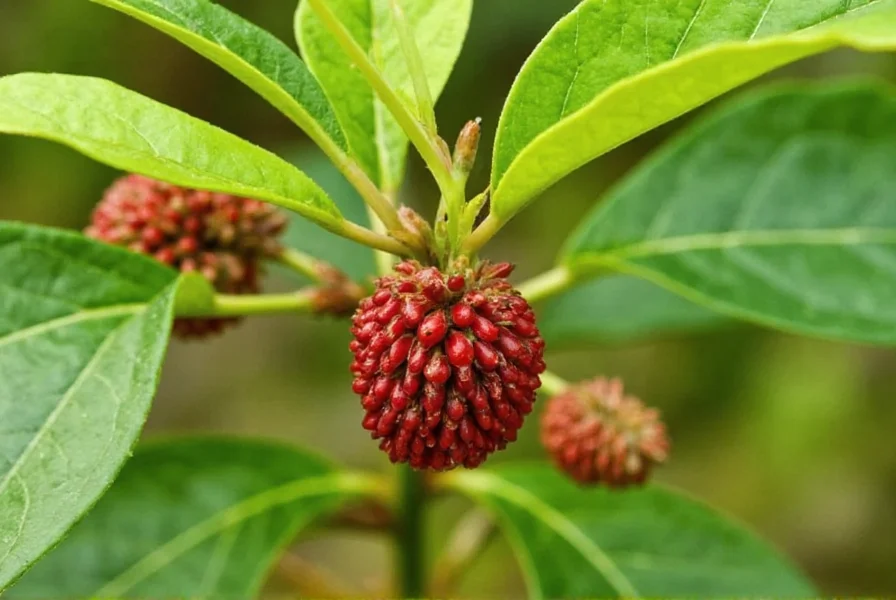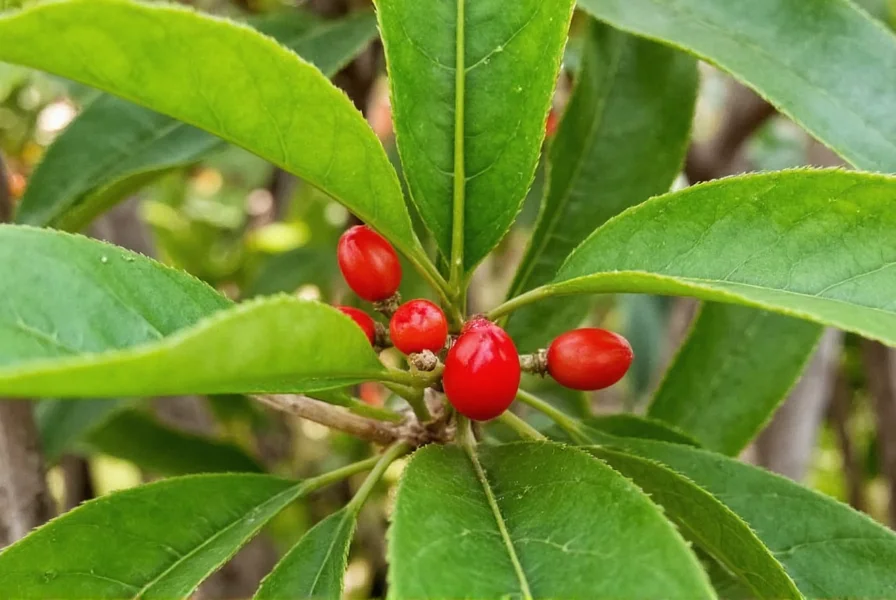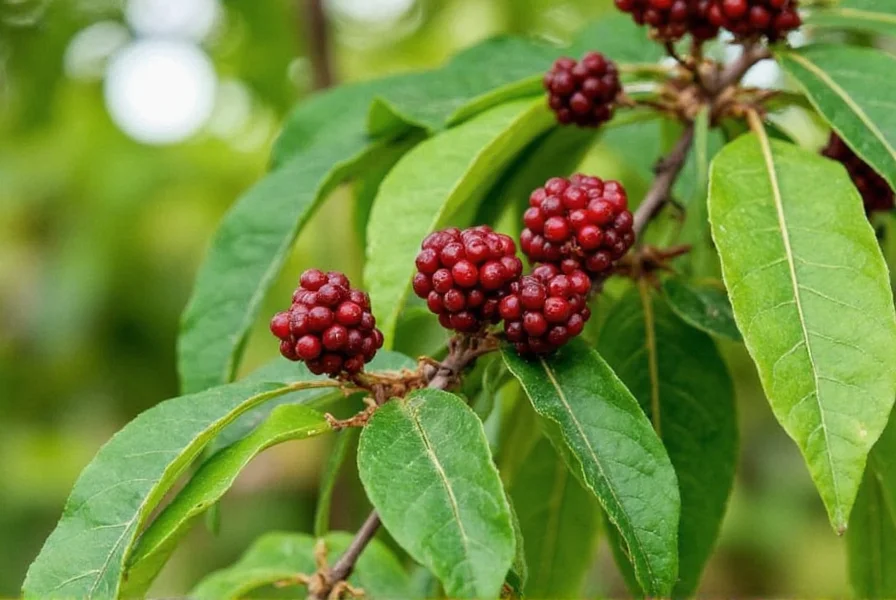The allspice plant, scientifically known as Pimenta dioica, has fascinated botanists and culinary enthusiasts for centuries. This medium-sized evergreen tree belongs to the myrtle family (Myrtaceae) and represents one of the few spices that comes from a single source rather than a blend. Understanding the allspice plant characteristics reveals why this particular tree produces such a complex flavor profile.
Botanical Features of the Allspice Plant
Reaching heights of 30-40 feet in ideal conditions, the allspice tree features glossy, aromatic leaves that emit a clove-like scent when crushed. The pimenta dioica plant characteristics include small white flowers that develop into green berries, which ripen to a deep purple before being harvested. These unripe berries contain the highest concentration of essential oils that create allspice's distinctive flavor.
Unlike many spice plants, allspice trees are dioecious, meaning individual trees produce either male or female flowers. For successful berry production, both male and female trees must be present in proximity for pollination. This biological feature explains why growing allspice trees can be challenging outside their native habitat.

Historical Significance and Naming
Indigenous peoples of the Caribbean, particularly the Taino, used allspice long before European contact. Spanish explorers initially called it "pimienta" (pepper) due to its pungent flavor, which later evolved into the botanical name Pimenta. The term "allspice" emerged in 17th century England when people noted its flavor resembled a combination of cinnamon, nutmeg, and cloves.
Despite common misconceptions, the difference between allspice plant and spice is straightforward: the spice is simply the dried, unripe berries of the allspice tree. No additional spices are blended during processing. This clarification addresses frequent confusion about whether allspice is a mixture rather than a single-ingredient spice.
From Berry to Spice: The Transformation Process
The journey from allspice berry harvesting to the familiar spice involves precise timing and technique. Harvesters pick the berries when they reach full size but remain green and unripe. Immediate processing is crucial—the berries undergo sun-drying for 8-14 days, during which enzymatic reactions develop the characteristic flavor compounds.
As the berries dry, they shrink and darken to a reddish-brown color, developing their signature aroma. Properly dried allspice berries contain approximately 4.5% essential oil, primarily composed of eugenol (60-80%), which gives allspice its clove-like scent. The allspice berry processing method directly impacts the final spice quality, with traditional sun-drying producing superior flavor compared to mechanical drying.
| Characteristic | Allspice Plant (Pimenta dioica) | Common Imposters |
|---|---|---|
| Native Region | Central America, Caribbean | Various regions worldwide |
| Plant Type | Evergreen tree (30-40 ft) | Shrubs or smaller trees |
| Key Compound | Eugenol (60-80%) | Different chemical profiles |
| Spice Production | Dried unripe berries | Various plant parts |
Cultivating Allspice Plants Outside Tropical Zones
While the allspice plant naturally thrives in USDA zones 10-11, gardeners in cooler climates can successfully grow these trees with proper care. The allspice plant care instructions for non-tropical regions include:
- Container growing with well-draining soil mix (50% potting soil, 30% perlite, 20% compost)
- Maintaining temperatures above 50°F (10°C) year-round
- Providing bright, indirect light (4-6 hours daily)
- Regular misting to maintain humidity above 50%
- Biannual fertilization with balanced organic fertilizer
For those attempting growing allspice tree in containers, selecting dwarf varieties significantly increases success rates. Container-grown trees typically reach 6-8 feet in height and may produce berries after 3-5 years when properly cared for. During summer months, moving potted allspice trees outdoors accelerates growth, but they must be gradually acclimated to prevent sunburn.

Traditional and Modern Uses Beyond Cooking
Beyond its culinary applications, the allspice plant has historical medicinal uses. Traditional Caribbean medicine employed allspice berry tea for digestive issues and as an antiseptic. Modern research suggests potential benefits, including antioxidant properties and anti-inflammatory effects, though more studies are needed.
The leaves and stems also have practical applications. In Jamaica, allspice leaves are used in traditional smoking methods for meats, imparting a distinctive flavor. The wood, though not commercially significant, creates pleasant-smelling firewood. Understanding these allspice plant uses beyond spice provides a more complete picture of this versatile tree.
Common Misconceptions Clarified
Several myths surround the allspice plant that deserve clarification. First, despite its name, allspice contains no actual blend of spices—it's entirely from one plant species. Second, the jamaican allspice tree isn't exclusive to Jamaica; while Jamaica produces high-quality allspice, the plant grows throughout the Caribbean and Central America.
Another misconception involves growing conditions. Many believe allspice plants require extremely high temperatures, but they actually prefer consistent warmth between 65-85°F (18-29°C) rather than extreme heat. The allspice plant growing zones can extend beyond traditional tropical areas with proper microclimate management.
Frequently Asked Questions
Can you grow allspice plants from store-bought allspice berries?
No, commercially available allspice berries are fully dried and cannot germinate. To grow an allspice plant, you need fresh, undried seeds from ripe berries, which are difficult to obtain outside tropical growing regions.
How long does it take for an allspice tree to produce harvestable berries?
Allspice trees typically begin producing berries 3-5 years after planting. However, significant harvests for spice production usually require 7-10 years of growth. Container-grown trees may take longer to mature and produce fewer berries than those grown in optimal ground conditions.
Why does my allspice plant not smell like the spice?
Fresh allspice leaves and berries have a mild, slightly peppery aroma but don't resemble the strong spice scent. The characteristic allspice flavor develops during the drying process through enzymatic reactions. Fresh plant material won't smell like the familiar kitchen spice until properly processed.
What's the difference between allspice and mixed spice?
Allspice comes exclusively from the Pimenta dioica plant's dried berries, while mixed spice (common in British baking) is an actual blend of cinnamon, nutmeg, allspice, and other spices. The name "allspice" refers to its flavor profile resembling multiple spices, not its composition.
Can you eat fresh allspice berries?
Yes, fresh allspice berries are edible but have a mild, slightly peppery flavor compared to the intense spice of dried berries. They're not commonly eaten raw as the full flavor develops during the drying process. In traditional Caribbean cuisine, fresh berries occasionally flavor stews and marinades.











 浙公网安备
33010002000092号
浙公网安备
33010002000092号 浙B2-20120091-4
浙B2-20120091-4